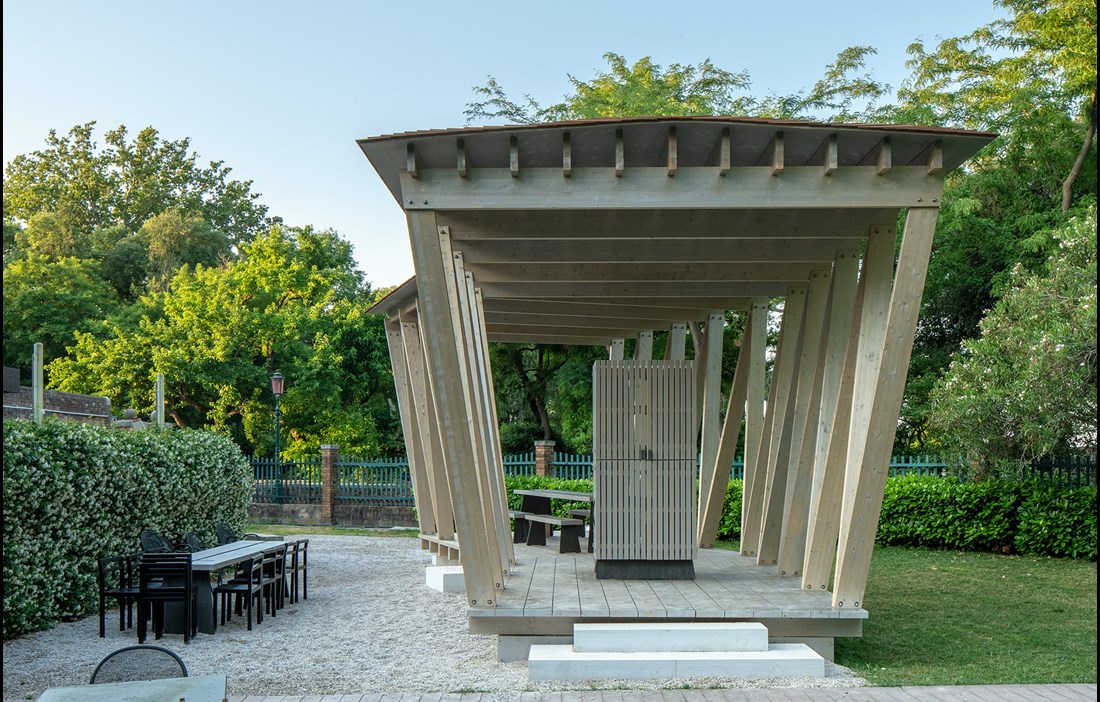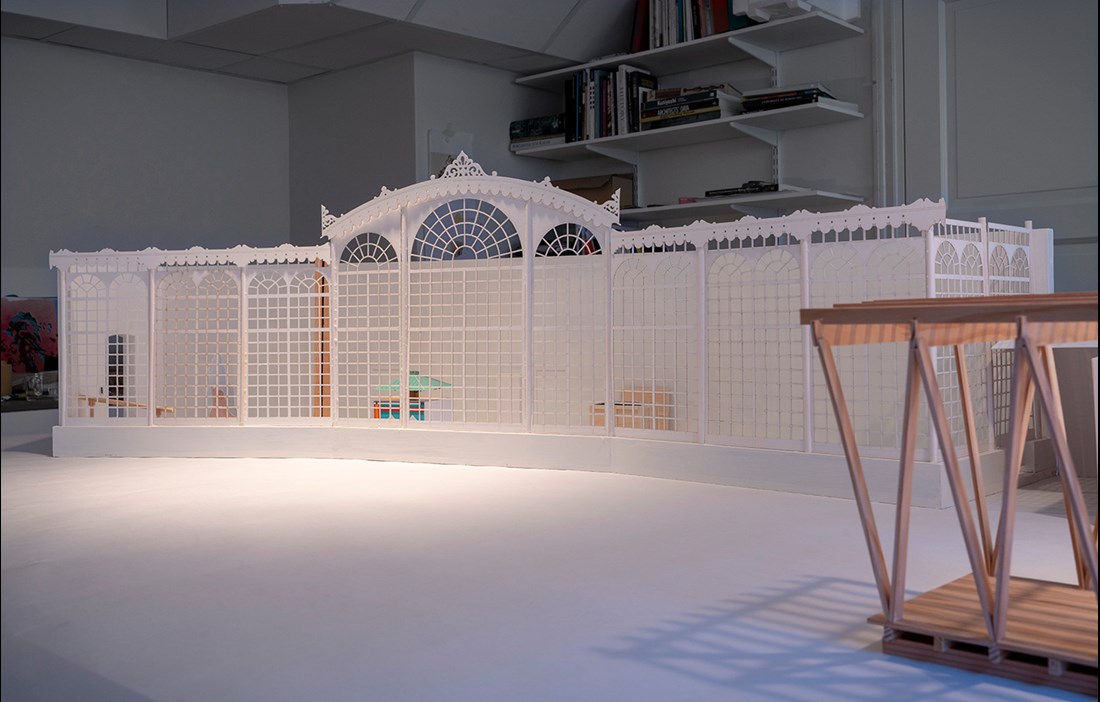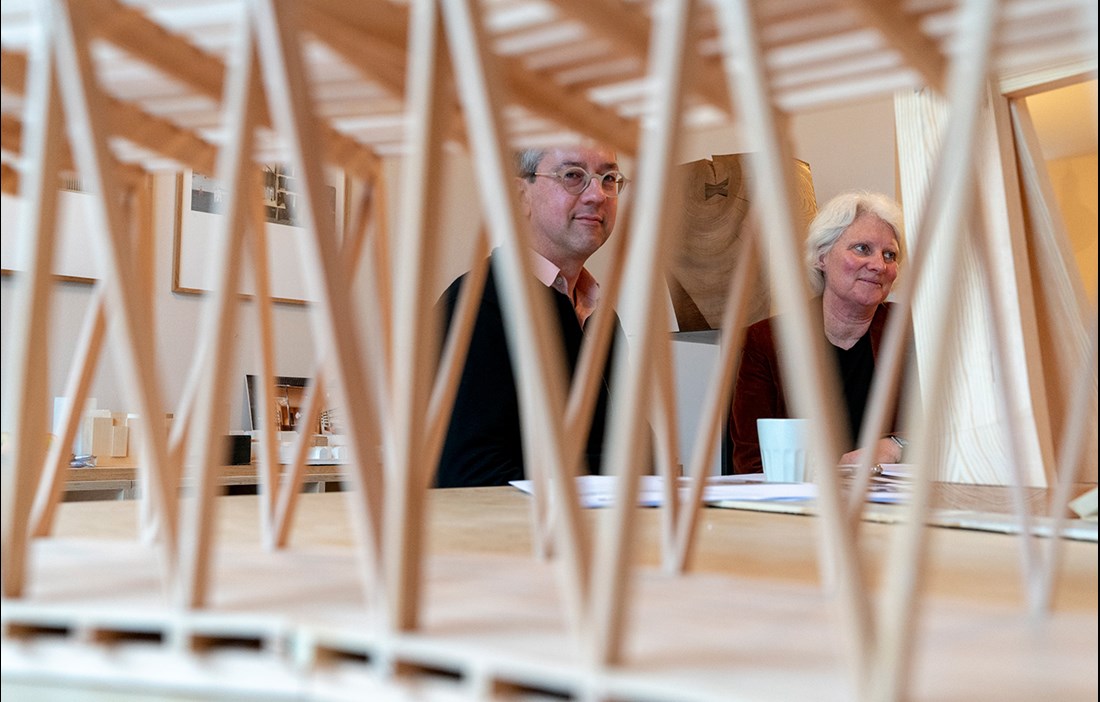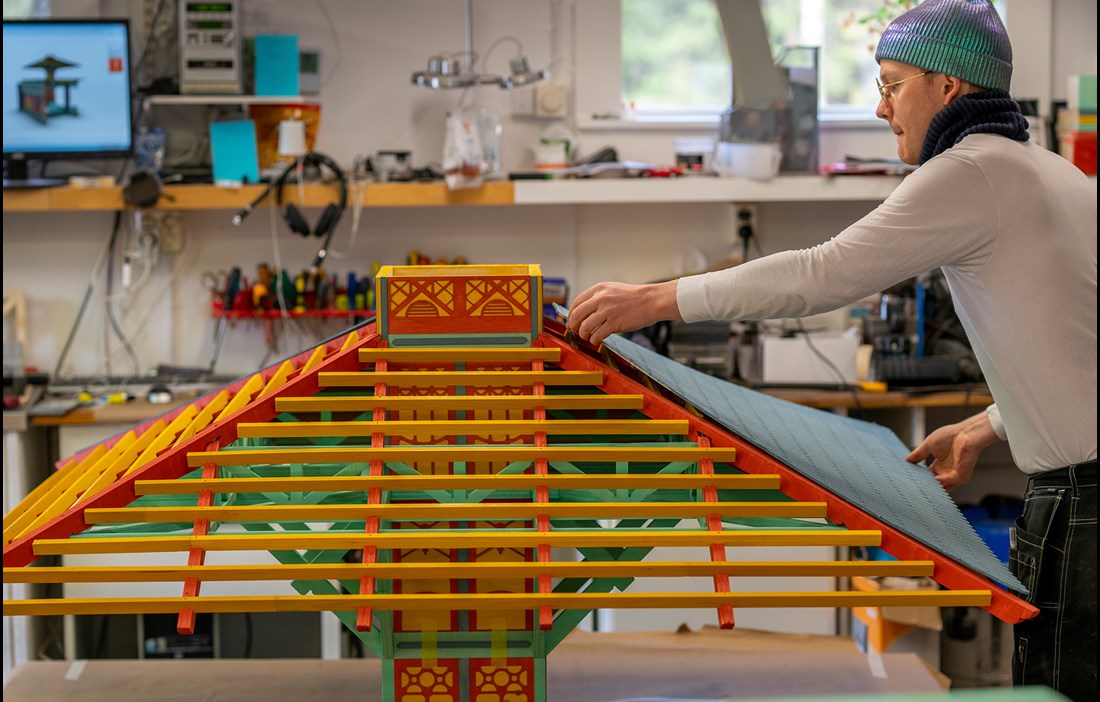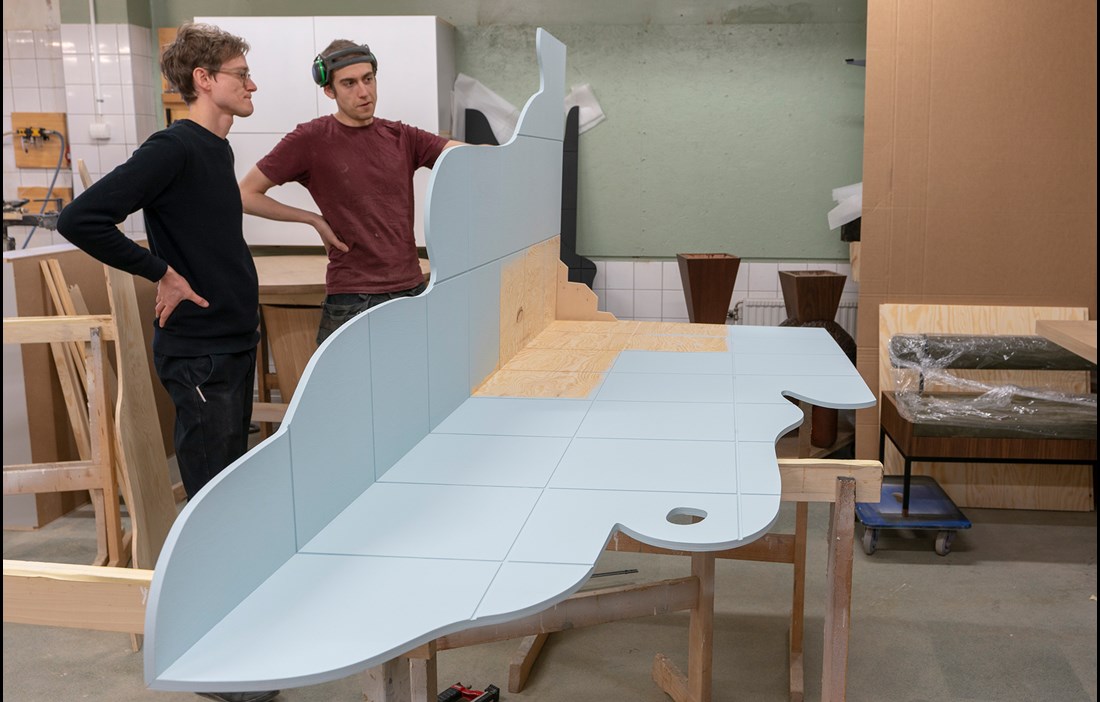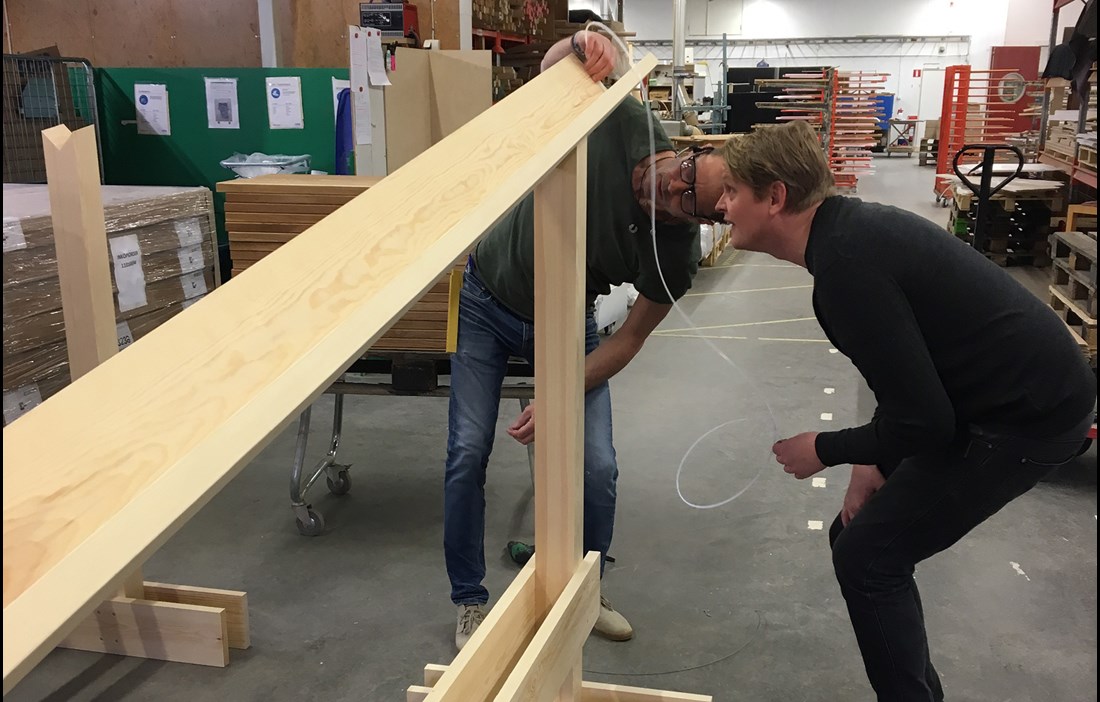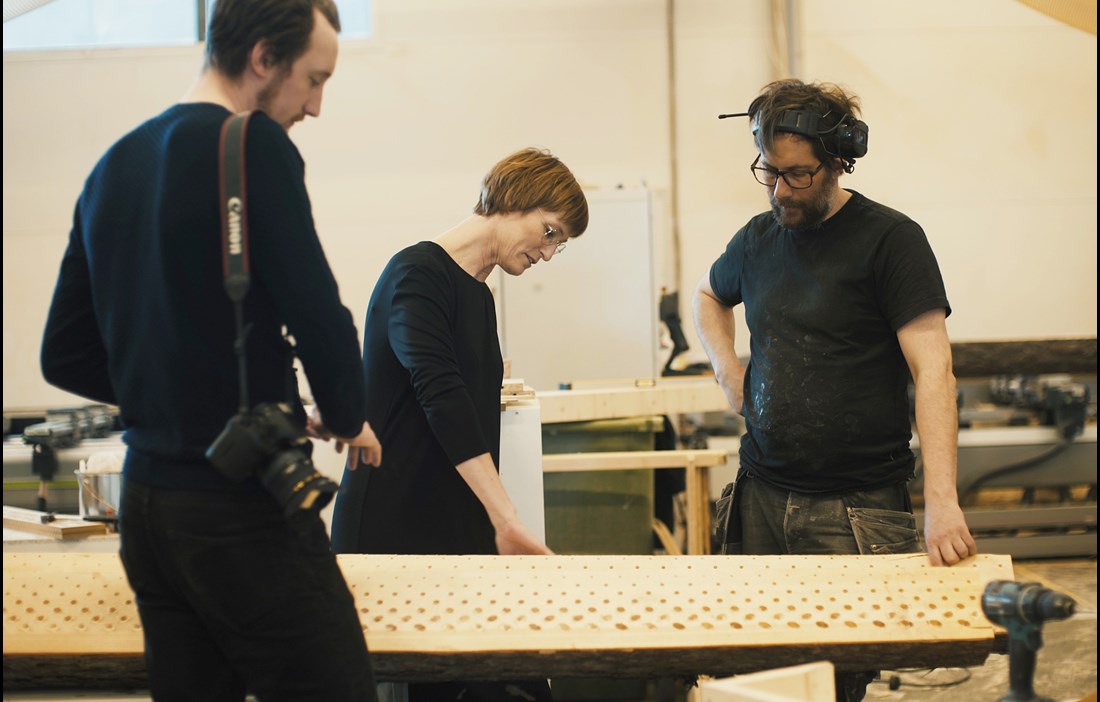For this year’s Venice Architecture Biennale, the 16th to date, the Swedish Association of Architects has partnered up with Swedish Wood and Folkhem to show works by seven selected architectural practices. The event is a showcase for wood as a building material and highlights the interplay between architects’ creativity and new techniques for building in wood.
24 May saw the opening of Greenhouse Garden – Reflect, Project, Connect, an event that continues in and outside the Serra dei Giardini greenhouse between the exhibition sites of Giardini and Arsenale. It is one of 12 side events linked to the Architecture Biennale’s main Freespace exhibition. The event is a joint venture by the Swedish Association of Architects, Folkhem and Swedish Wood, with support from the Swedish Institute, and is based on the UN’s Sustainable Development Goals, as set out in the 2030 Agenda. In 2018 the focus is on the forest as a resource, which offers an opportunity to promote wood as a building material and talk about how it affects community planning and architecture.
The words reflect, project and connect describe all the activities going on around the greenhouse, with reflect representing the exhibition inside called Plots, Prints, Projections. Project stands for the temporary wooden pavilion outside the greenhouse. The Loggia d’Ombra, designed by In Praise of Shadows, presents a full-scale example of both digital technology and architectural design. Connect represents the activities in the garden, where the pavilion plays host to a series of talks, seminars and workshops with a focus on architecture, the built environment and the global goals of the 2030 Agenda. The aim is to show how architecture and wood can play their part in achieving the goals.
The exhibition Plots, Prints, Projections features works by six architectural practices (see separate boxes). It is based on close co-operation between the wood industry, joiners and the selected architects, who have worked in dialogue to develop the specific objects that are now on display as structures and installations. An open partnership and an exploratory approach have been a key part of the process, which describes the architects’ relationship to wood and wood technology, the meeting of analogue and digital technologies and the dialogue with the wood industry. The drawings and a detailed description of the process for innovative product development are presented in a catalogue produced for the Biennale.
Tove Dumon Wallsten of the Swedish Association of Architects is leading the project and is responsible for the overarching programme of activities and events in the greenhouse and pavilion. She believes it is important to be able to offer a space where more Swedish architects can raise their profile in Venice and shine a light on the role of architecture in society.
“Greenhouse Garden – Reflect, Project, Connect is the result of an exciting collaboration that lends equal weight to every element. The aim is for the place to be a focal point where collaborations between architects and the wood industry can encourage a conversation about how together we can move forward with the help of new technology. We want to hear more voices explaining why architecture is an important part of a sustainable future.”
Plots, Prints, Projections is curated by Ulrika Karlsson, who works as both a practising architect and a professor at KTH Royal Institute of Technology and Konstfack. She has defined her role as practical curation. Out of her practice comes more in-depth knowledge of how things work and how production processes operate, particularly when it comes to new technologies and digital tools for drawing and production, such as CNC milling.
The exhibition explores how wood can be used as a material. The hope is that it will inspire and open up a discussion about future cities and how new technologies and manufacturing methods give rise to new products and a different way of building.
“The name Plots, Prints, Projections is a kind of play on words that describes the interplay between the two-dimensional and the three-dimensional, the technical and the narrative,” explains Ulrika Karlsson.
A plot can describe the events of a story, a printed drawing and a parcel of land. Print now includes both two- and three-dimensional printing in many different materials and technologies. Projections refers to the architect’s projections such as plan, section and perspective, but it can also mean suggesting something, projecting your visions.
“Working with the three concepts has been exciting, because they offer different ways to approach the exhibition, wood as a material and the site,” says Ulrika Karlsson.
The site and its history have played a major role in Ulrika Karlsson’s curation of the exhibition. The greenhouse from 1894 is made of cast iron and glass. When cast iron was first used, it was often designed to resemble wood.
“I think that’s an interesting link that we can keep in mind when working with the properties of a material. How we’ve often asked one material to behave like another,” says Ulrika Karlsson.
Katarina Lundeberg and Fredric Benesch from In Praise of Shadows were also interested in the connection with the greenhouse and with their pavilion Loggia d’Ombra, they have tried to create a dialogue between the two buildings, in terms of geometry and function. They worked with Martinsons, Moelven, Källemo and Folkhem, and early on in the project they visited Martinsons to learn more about their products and production methods. They ended up choosing glulam and a material-optimised structure composed of 127 parts, with a load-bearing structure made from 34 V-shaped glulam posts cut using a CNC milling machine. The roof is made of cedar shingles from Moelven that were pre-mounted on a plywood sheet. The pavilion has been fixed together with screws and dome nuts, making it as easy to assemble as it is to move and re-use.
“We’re playing with the story of cast iron and wood by finishing the glulam with a silver glaze. In this way, we’re upgrading the wood to an architectural work of art and giving the wooden structure a twist,” says Katarina Lundeberg.
Fredric Benesch continues:
“There is also a geometric playfulness. Just like the greenhouse, the pavilion angles around. However, since we were looking for shade rather than sun, the geometry has been inverted. Working on the pavilion has brought us new experiences that we hope to be able to transfer to future projects.”
The furniture is also part of the pavilion’s geometry and reflects the link between cast iron and wood. It was developed in partnership with Källemo, who became interested in a collaboration following a meeting at Stockholm Furniture Fair in February.
“Källemo usually works with a small number of components made by local subcontractors that they then assemble in the factory. We adapted ourselves to this approach when developing the benches, table and cupboard that now stand in the pavilion,” says Katarina.
The installations inside the greenhouse also show how the process has been just as important as the end result. The tree trunk that Nordmark & Nordmark has based its installation around was hand-picked in the forests outside Piteå in northern Sweden and emphasises the importance and role of wood in the ecosystem. Norell/Rodhe have chosen to explore the material from a new perspective, with the grain of a plywood sheet providing a design source and giving the project a narrative. TAF and Katja Pettersson make a statement about how we view the use of nature’s resources.
Folkhem, a Swedish housing developer that consciously markets wood as the world’s best construction material, is attending its third Venice Biennale.
“We’re in exciting times, with digitalisation opening up new opportunities for wood as a construction material. Folkhem has decided that we want to get involved in changing the construction industry. And what could be better for that than appearing at the Venice Biennale? A place where architects from all over the world come together to be inspired by each other,” says Sandra Frank, Marketing Manager at Folkhem.
The Venice Architecture Biennale has changed in recent years, from previously focusing on exhibitions of individual buildings or architects’ works to more of a focus on broader exhibitions about the social, political, environmental and economic forces that are currently shaping the world’s cities. This can also be seen as a shift towards a politically aware, technical skilled and collaborative architectural culture. This year’s Architecture Biennale runs from 26 May – 25 November.
Text Katarina Brandt

